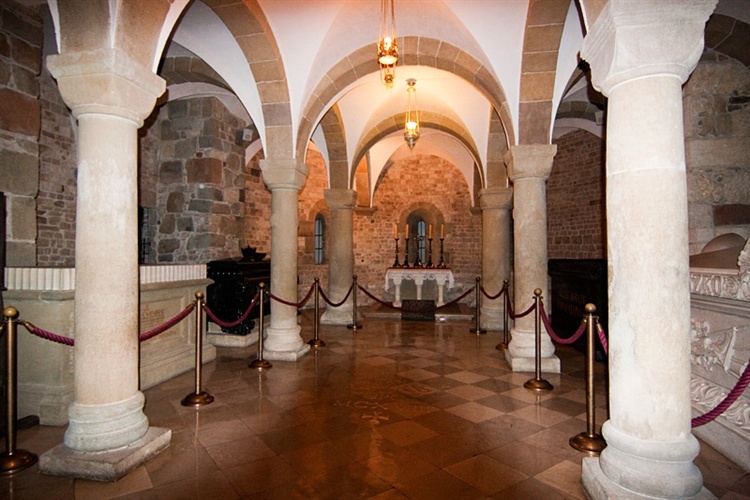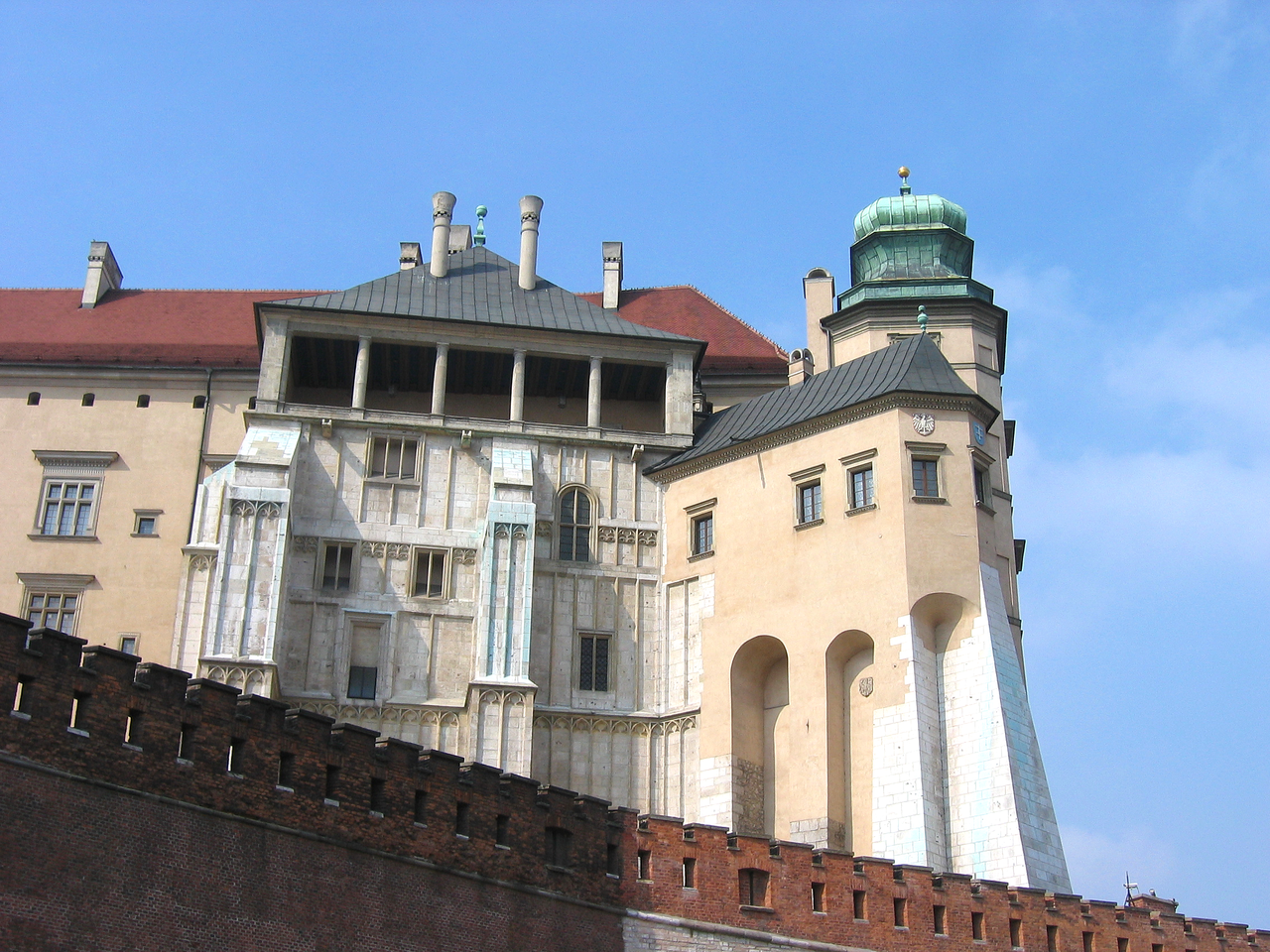 Zamek – Wawel – Komnaty królewskie – Głowy wawelskie
Zamek – Wawel – Komnaty królewskie – Głowy wawelskie
Głowy wawelskie są najstarszym zabytkiem spośród przedmiotów powstałych specjalnie dla Wawelu, kolejnym wyjątkowym dziełem świadczącym o dojrzałości kulturalnej zamawiających i dużej klasy artyzmie ich twórców. Nie ma pewności, skąd wywodzą się niektóre rzadkie motywy.
Najwybitniejszym twórcą krakowskich głów był mistrz Sebastian Tauerbach, w 1529 r. sprowadzony do Krakowa z Wrocławia, który przybył te swoją ekipą i przepracował dla potrzeb wawelskiego dworu – najpierw dla Zygmunta Starego, a potem dla jego syna – prawie dwadzieścia pięć lat. Spod jego dłuta wyszło wiele przedmiotów wysokiej klasy artystycznej, ozdabiających komnaty królewskie, kaplice i inne pomieszczenia. Drugim autorem głów był Hans (Joannes) Snycerz, zdolny rzeźbiarz krucyfiksów i figur świętych, który przez długie lata sprawował konserwatorską pieczę nad ołtarzem Wita Stwosza w kościele Mariackim.
Głowy z Sali Poselskiej wyrzeźbiono z drewna lipowego. Z pierwotnej liczby stu dziewięćdziesięciu czterech zachowało się zaledwie trzydzieści. Jak widać, są to realistycznie ukazane głowy męskie i żeńskie, z których każda jest inna: ukoronowane, w nakryciach dworskich, mieszczańskich, studenckich, głowy w hełmach, bez nakrycia, alegoryczne, krzyczące, uśmiechnięte, z zaciśniętymi lub nawet zawiązanymi ustami. Tej ostatniej, jeśli wierzyć wszechwiedzącej legendzie, zawiązano usta, gdyż ośmieliła się przemówić do Zygmunta Augusta: Rex Augustę, iudica iuste (królu Auguście, sądź sprawiedliwie). Być może głowy z Sali Poselskiej stanowiły ilustrację do jakiegoś dzieła literackiego albo kroniki świata.
Sala Pod Zodiakiem to dawna reprezentacyjna jadalnia. Rzut oka na fryz przedstawiający znaki zodiaku wyjaśnia jej nazwę. Salę ozdabiają wspaniałe arrasy z serii Budowa Wieży Babel.
Salę Pod Planetami, dawniej zwaną Szklaną, otacza w górnej partii ścian fryz z personifikacją planet. Arras z serii Dzieje Noego nosi tytuł Pijaństwo Noego.
Fryz w kolejnym pomieszczeniu, przedstawiający sceny z bitwy pod Orszą w 1514 r., dał nazwę sieni Bitwy pod Orszą.
Następna sień służyła za jadalnię Zygmuntowi III Wazie. Malowidło wyobrażające Pallas Atenę odtworzył w latach 30. XX w. Lucjan Adwentowicz. Pomieszczenia północnego skrzydła zdobią wczesnobarokowe plafony. Pierwsze z nich to tzw. Sala Pod Ptakami z XVII w., z marmurowym kominkiem i herbami Polski i Wazów. Służyła ona jako sypialnia króla Zygmunta III Wazy.
Niegdyś pośrodku sufitu Sali Pod Orłem znajdowała się rzeźba orła; nie zachowała się jednak do naszych czasów. W tym pomieszczeniu odbywały się dawniej sądy królewskie. Piękne meble z XVII w. pochodzą z Gdańska.
Sień przed Salą Senatorską to efekt pracy mistrza Trevano. Warto zwrócić uwagę na schody, które są tu znacznie wygodniejsze, są bowiem szersze, a ich stopnie niższe. Takie rozwiązanie, zapowiadające przepych baroku, umożliwiało parady orszaków królewskich.
Największą komnatą na zamku jest Sala Senatorska. Tu odbywały się uroczystości państwowe, posiedzenia Senatu, spektakle teatralne i bale – znajdujący się tu drewniany „balkon” to galeria dla orkiestry dworskiej. Pięć arrasów wiszących na ścianach należy do cyklu Dzieje Noego. Widać tu całą biblijną historię: budowę arki, wejście zwierząt na jej pokład, straszny potop, wyjście zwierząt i ofiarę dziękczynną Noego. Miejsce między wielkimi arrasami zajmują mniejsze, przedstawiające zwierzęta na tle krajobrazu. Z arrasów pod galeryjką spoglądają satyrowie, a nad nimi wiszą tkaniny z herbami Polski i Litwy. I tutaj miejsce po tronie zajął klasycystyczny fotel z XVIII w., podobno należący do Stanisława Augusta Poniatowskiego. W czasach generalnej guberni Hans Frank urządził w Sali Senatorskiej kino.







